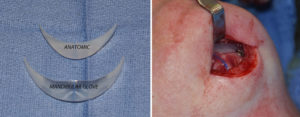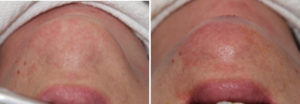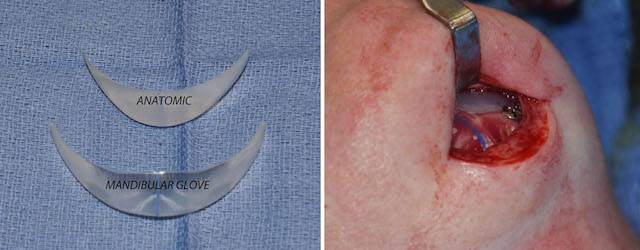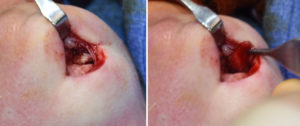Background: Chin augmentation in females is a common procedure that is often combined with other facial procedures (e.g., rhinoplasty) or done as a stand alone surgery. While it is a facial reshaping surgery that has been done for a long time and given that it is also performed frequently, it is assumed that it is a ‘simple’ operation with few problems. But it is important to be aware that while serious complications are virtually non-existent in chin implant augmentation, aesthetic ones are not uncommon at all.
While most patients tyoically think of the risks of chin augmentation as infection or mental nerve injury, the most common ones are aesthetic in nature. This has everything to do with the implant from the incorrect style or size or positional placement on the bone. While the placement part of the implant is usually straightforward, getting the actual implant selection ‘right; is not always as simples it may seem.
One common chin implant problem in females is when it provides too much width. While there are some females that do desire more chin width as its horizontal projection is increased, this would be the exception and not the rule. Anatomic chin implants are one style that does not have long extended wings which can eliminate the risk of chin widening…but it is also a stiffer implant that may not bend well onto the bone. (unless screwed into place) Thus it can inadvertently create chin width by lack of adaption to the underlying bone contour.



It is hard to know if the anatomic chin implant may have produced a satisfactory aesthetic result has it been screwed into placed. The implant had not only slide off the end of the chin and its stiff winds did not adapt to the bone…particularly when it is sitting too low one the bone. While some surgeons argue that screw fixation of a chin implant is never needed, this case is an example of why that statement is not always true.
Case Highlights:
1) Implants that widen or lengthen the natural bony chin in females often leads to anesthetic dissatisfaction.
2) Chin implants that are malpositioned off the end of the chin will vertically lengthen it.
3) An extra small mandibular glove chin implant can work well in a thin petite female with a naturally V chin shape.
Dr. Barry Eppley
Indianapolis, Indiana





